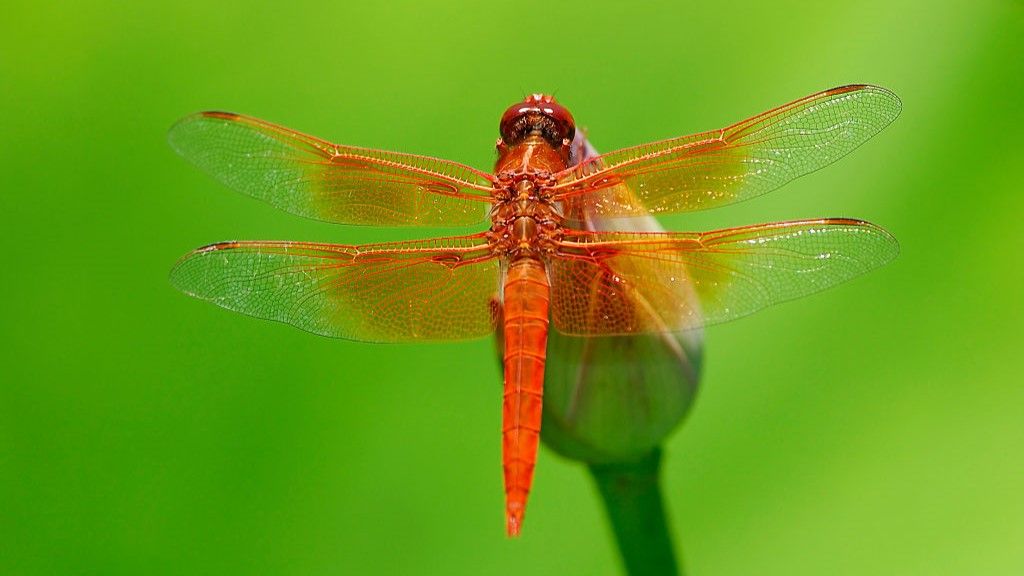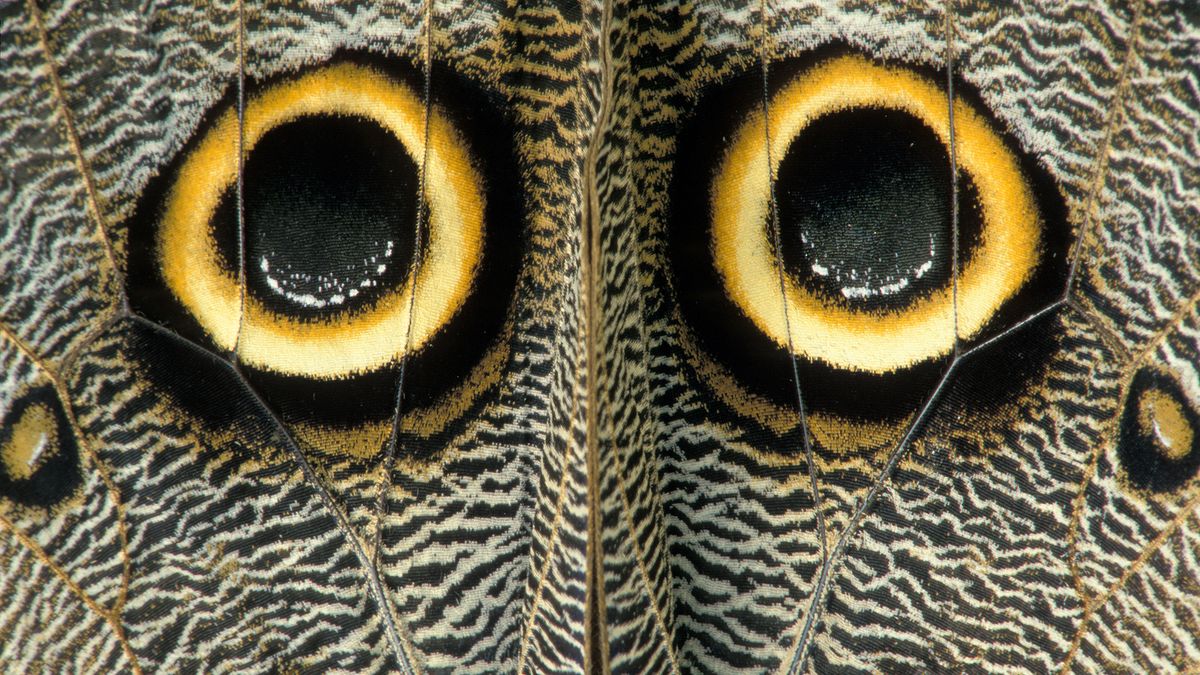In this excerpt from “Carbon: The Book of Life” (Viking, 2025), author and environmentalist Paul Hawken delves into the world of insects and the incredible adaptations critters like dragonflies and butterflies have evolved to help them survive. Hawken hopes that by zooming in on some of Earth’s less popular inhabitants, people can gain a better appreciation for life, which he says is the key to stopping and reversing the climate crisis.
A flame skimmer hovers 2 feet (0.6 meters) from my face, looking straight at me. Its red bulbous eyes have 24,000 corneas, allowing it to see 360 degrees — up, down, backward, forward and around simultaneously. What it makes of me visually is unimaginable.
It has 30 opsins, the universal photoreceptor molecule that resides in the visual systems of the animal kingdom. I look back with my three opsins and two blue corneas. At the fishpond where I am sitting, the skimmer hovers and dashes about with its satin wings, red and orange, body and wing. My visitor weighs 0.1 ounces (2.8 grams) and darts around at speeds up to 60 mph (96 km/h) for the few weeks it lives in the air.
Its three- to four-year lifespan is mainly spent as larva, a freshwater nymph, an underwater omnivore feeding on tadpoles, spot tails, minnows and other nymphs. Today, it is sporting iridescent wings that sparkle like ball gowns, looking to mate, which it prefers to do immodestly in the air. As it sparkles and pulsates in front of me, perfectly stationary, I am looking at 350 million years of evolution.
Dragonflies’ compound eyes see ultraviolet light, giving them a unique ability to detect shape and movement. Military experts have studied their behavior to develop software for stealth aircraft because they employ active motion camouflage. When a dragonfly hunts, it hovers perfectly still and positions itself between its prey and a shadow cast behind it by, say, a tree, concealing its position. It’s a bit like creeping up on someone in a forest hiding behind branches. The dragonfly can continually change its position based on where its prey moves to keep the tree and its prey lined up — a butterfly or mosquito won’t notice. The dragonfly gradually looms closer until it reaches striking distance. This evolutionary adaptation has suited dragonflies well, and they have become highly successful predators despite living short lives.

A remarkable example of Indigenous observational science was revealed in 1949. Ethnoentomologists documented how the Diné (Navajo) named and classified over 700 species of insects, describing their sounds, behavior and habitats, knowledge that had been shared, memorized and passed on for generations. Why did the Navajo do this? Maybe because they are scientists. They wanted to know their world better, knowledge that could be the difference between surviving and thriving for people who live completely on and with the land.
In the forests of Mexico resides the giant owl butterfly (Caligo eurilochus) that flaps its papery 7-inch (18 centimeters) wings at dusk when predator birds are absent. At the base of each wing is a perfectly formed eyespot that, together, uncannily resemble the eyes of an owl. An artist would be challenged to create such replicas.
English naturalist Henry Walter Bates first explained the copycat wings. Arriving in 1848, Bates traveled far up the Amazon and its tributaries. Aside from its racist tropes, his book, “The Naturalist on the River Amazons,” is a stunning description of 11 years of study wherein he collected over 14,000 species and identified 8,000 new ones, from mundane foraging ants to jaw-dropping, foot-wide, bird-eating Mygales spiders that giggling children paraded around leashed like a pet dog.
Like other naturalists of his day, John James Audubon and Alphonse Dubois, Bates shot birds right and left to be packed in formaldehyde and handed over to natural history museums. However, his primary interest was Amazonian butterflies.
He noticed edible butterflies being ignored by insectivorous birds and dragonflies because their wing coloring mimicked noxious or predatory species. The spicebush swallowtail caterpillar (Papilio troilus) is born black and white disguised as bird poop. It will molt three more times with spots on its head that make it appear like a snake — known as Batesian mimicry.
This evolutionary process rewarded deceptive wing patterns and coloring to protect species. He was an early supporter of Darwin’s theories of evolution, and Darwin called Bates’s book the best on natural history ever published in England.
What neither Darwin nor Bates could explain is how butterflies manage to disguise themselves. Had caterpillars ever looked at an owl’s eye? They evolved, to be sure, and failures are gobbled up, but how exactly does the pupa of a caterpillar morph into a butterfly with perfect replicas of owl eyes on its wings?
The scientific explanation is a regulatory network that allows genes to collaborate and learn from each other. That does not tell us how the genes were programmed in the first place. Millions of years ago, genes began to paint wings with pigmented designs of extraordinary fidelity and complexity. Who was the artist?
Text from “Carbon” by Paul Hawken, published by Viking, a division of Penguin Publishing Group, a division of Penguin Random House, LLC. Copyright (C) 2025 by Paul Hawken. Reprinted with permission from Penguin Random House.
To delve deeper into Paul Hawken’s work, you can read an interview with the author here, in which he tells Live Science about the paradigm shift needed to start valuing, protecting and restoring the planet and its inhabitants.

